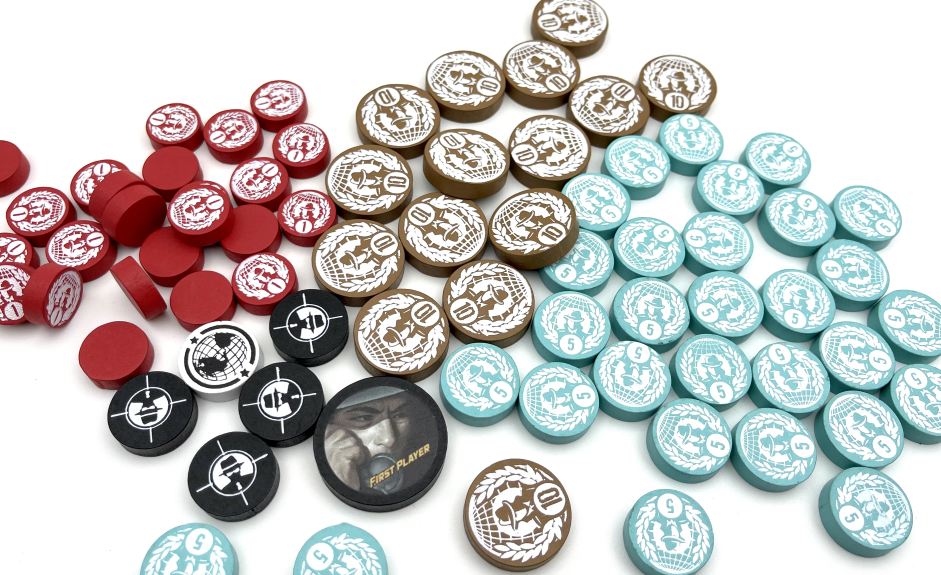Wood components in tabletop games offer a return to the organic and tactile origins of gaming, enriching the player experience in multiple dimensions. Crafted from wood, these pieces go beyond visual
aesthetics, contributing to the overall design, gameplay, sustainability, and uniqueness of board games.

The aesthetics of wood components are unparalleled, introducing natural textures, grains, and warm colors that enhance the visual appeal of tabletop games. Crafted with precision, wooden meeples, tokens,
and boards showcase craftsmanship, creating a visually pleasing and inviting gaming environment.
Beyond aesthetics, wood components contribute to thematic immersion. Games with historical or fantasy themes leverage the authenticity of wood, transporting players into the world of the game. The
tactile experience of wooden pieces adds a sensory dimension to gameplay, creating a satisfying and enjoyable interaction that goes beyond mere visuals.
Durability is a hallmark of wood components, standing out for their resilience and longevity. Unlike some plastic alternatives, wood withstands wear and tear, ensuring that game pieces remain sturdy and
reliable over time. This durability makes games with wood components a lasting investment for players seeking enduring value.
Customization possibilities with wood components are extensive. Game designers can shape, carve, and engrave wooden pieces to create unique and distinguishable elements. This level of customization
enhances the uniqueness of each game, setting it apart in a market filled with diverse options.
Wood's use in game components aligns with environmental sustainability. Responsible sourcing of wood from well-managed forests supports eco-friendly practices, resonating with environmentally
conscious players. This sustainable approach adds another layer of appeal to games featuring wood components.
Wood's versatility allows for diverse design possibilities. From intricate carvings to modular wooden tiles, the material can be shaped to suit various game mechanics and themes. This versatility encourages
game designers to explore innovative and thematic uses of wood in their creations.
Wood components can offer educational value in games designed for learning purposes. Representing historical artifacts, geographical features, or scientific elements, wooden pieces provide a tangible and
memorable way for players to engage with educational content, adding an extra layer of value beyond entertainment.
The cultural and artistic significance of wood components adds depth to game design. Drawing inspiration from traditional craftsmanship or cultural symbols associated with wood, certain games create a
connection between the game and broader cultural contexts, enriching the gaming experience.
Wooden components contribute to a sense of community among players. Enthusiasts appreciate the craftsmanship and quality associated with wood, and collectors find joy in amassing games with
beautifully crafted wooden pieces. This shared appreciation creates a community around the tactile and aesthetically pleasing elements of games.
In conclusion, wood components in tabletop games embody a holistic approach to gaming, enhancing aesthetics, providing a tactile and immersive experience, contributing to sustainability, allowing for
customization, and fostering a sense of community. As the board game industry continues to evolve, wood components stand as timeless elements that elevate the overall gaming experience.